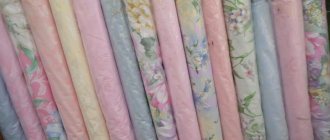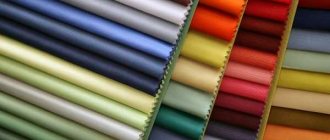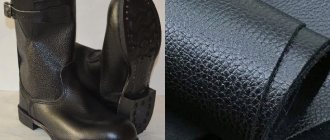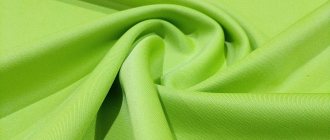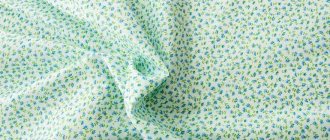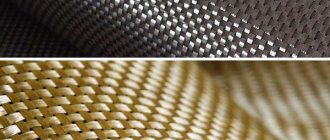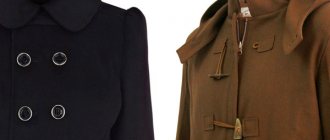Description and production
For a long time, silk fabrics were produced only from threads produced by the silkworm, but all this until it became clear that a similar cocoon was also woven by butterflies from another family - the peacock-eye (oak silkworm). They learned to cultivate the oak silkworm only 250 years ago, so this material, in the old fashioned way, is usually called wild silk (dupion). However, even now the cultivation process is problematic and not always justified, therefore, to produce fabric, the silk of the oak silkworm is simply fed in the wild. If we talk about what fabrics chesucha belongs to, then these are, of course, wild silks. You can see what wild silk fabric looks like in the photo.
To understand what kind of comb fabric it is, it’s worth talking about its production, especially since this process is quite interesting.
- The fibers are combed from the cocoon and carefully sorted
- Then the whole mass is tousled and impurities are removed.
- Soak and dry thoroughly
- Comb out again and form thin tufts.
- They are twisted into threads and woven using the plain weave method. What it is? This is a weaving technique where the warp thread is much finer than the weft thread.
As a result, we get a material that can be described as follows: texture, rough surface and density are much higher than other silks. Let's see what chesucha fabric looks like - photos of the fabric and products made from it.
Composition and properties
Chesucha is a fabric with a pronounced textured pattern, with a surface covered with small irregularities and high density.
It is made by the simplest and most common method of plain weave threads, and the raw materials for it are obtained in two main ways:
- unwinding the cocoon;
- combing fibers from it.
At the same time, the fibers are not carefully selected and do not require complex technological processing. The result is a fabric with all the qualities of silk fabric and a relatively low cost.
Reference! In modern versions of chesuchi, synthetic (viscose) or cotton fibers are additionally added. The result is a cheaper fabric that imitates silk and differs in structure, color or shine.
Compound
Secretions of the glands of the oak silkworm. In other matters, modern techniques make it possible to add cotton fibers to the material. What can I say, if you decide to buy this material today, you will most likely come across a material that contains only cotton or cotton and viscose. Carded cotton fabric - what is it? This is a material that only imitates silk, of course, it is cheaper. The Trekhgorka comb cotton fabric (produced by Trekhgornaya Manufactory) is especially popular. Price per linear meter of material - from 270 rubles (imitation) and from 1200 rubles (dupion)
Story
The types of silk already known to us, which are more common than others, are produced thanks to caterpillars - silkworms. But there are other caterpillars that belong to a different family and are predominantly nocturnal. They are called oak silkworms.
They were domesticated much later than silkworms; it was not possible to grow these insects in an artificial environment due to the conditions they needed. They were able to solve the problem only about 250 years ago, although maintaining caterpillars is still difficult. Therefore, oak silkworms are fed in the wild, and then the necessary products of their activity are collected.
Because of this, the price of comb is high, but this material has special properties. And some of them are not found even in other types of silk, although they are similar. The difference is manifested in the appearance of the fabric - it looks rich, with charm and shine. Although it is believed that this is “wild silk”, which in terms of elite status is lower than silk from silkworm threads.
Properties
What is comb silk if not a natural material, which means it is characterized by many positive qualities:
- High density (other silk fabrics have much lower density)
- Strength
- Specific textured surface
- Strength and resistance to mechanical damage and abrasion
- Good breathability and hygroscopicity, characteristic of all natural materials
- Excellent thermal conductivity, which provides comfort in both cold and hot weather
- Hypoallergenic
The disadvantages include the following properties:
- The product may deteriorate if exposed to direct sunlight.
- Items made from this material require careful care
- They also wrinkle a lot
Manufacturing
The first manufactory in which it was possible to obtain chesucha was located in the Chinese province of Shantung, so this fabric also has another name in honor of this state. Due to the nature of the translation, you may also hear the material referred to as shandung or shendung. Chesuchu is also sometimes distorted, called chensunchey or chinchunchey. This happens because Chinese words are ambiguously translated into Russian.
The threads that are extracted from the cocoon of the oak silkworm are considered to be of insufficient quality, so the production of fabric has nuances. First, the resulting raw materials need to be sorted. It may contain impurities that are not suitable for manufacturing, so the threads are ruffled and all excess is removed. In addition to visible debris, the raw materials also contain chemicals that can be removed by soaking. Next, the mass is dried, ruffled again and twisted into small bundles, from which finished threads are made.
The threads are thin, but different in thickness and density. Because of this, the finished material, which is obtained by plain weaving, has a rough surface, unlike the smooth gloss of silk. Such textured varieties of silk are called tussor; they look interesting in clothes.
Care
Maintenance, as we said, is not the easiest. Read the product label carefully, and we will give here only general rules:
- If heavily soiled, take the item to dry cleaning
- Hand washable in 30 degree water
- You should not use washing powder, it is better to add baby soap to the water
- Rinse with water and vinegar
- There is no need to wring out the items in the machine or twist things out of the scallop with your hands - let the water drain on its own
- Dry naturally on a flat surface
- Iron with an iron set to “Silk” mode.
Product care
Caring for wild silk is the same as for its cultivated variety. He is also quite capricious:
- Hand washing is allowed at 30 degrees, but it is still recommended to dry clean items;
- When washing, it is recommended to use special products with a mild composition;
- Products should be rinsed in water at room temperature. You can add a little vinegar there. This will not spoil the fabric itself, since it is not exposed to organic substances, but will refresh the color;
- Do not twist or squeeze products in a centrifuge. After washing, it is recommended to simply let the water drain freely;
- To dry, it is better to wrap the product in a terry towel. It will absorb excess moisture. After this, it is recommended to lay the item out on a flat horizontal surface for further drying;
- It is recommended to iron comb, unlike classic silk, after it has completely dried, and not when the item is still slightly damp;
- It is recommended to iron at a temperature no higher than 110 degrees (silk mode) on the reverse side or using additional fabric;
- It is not recommended to dry wild silk in the open rays of the sun.
Chesucha or wild silk is an excellent alternative to the classic version. It is distinguished by an interesting heterogeneous texture, and its price is much lower. It does not cause allergies, and there are also options with different densities. Wild silk will be appreciated by lovers of all things natural, as it not only has a natural composition, but also most often remains in its original pleasant golden hue!
https://youtube.com/watch?v=lpMJf6Jolko
2020 textiletrend.ru
Reviews
Natalya, 47 years old: My youngest daughter is a very original girl, she always wants something unusual. And when it came to choosing the material for the prom dress, she wanted chesucha. I gave in and was convinced that the choice was justified - the dress looks so unusual - with a textured surface, shine and an unusual but natural shade. In addition to the lyrics, in a dress made of this material, her daughter, according to her, felt comfortable - not hot in a stuffy room and not cold on a morning walk. Still, it’s a natural material.
Irina, 34 years old: I remember my dad was very fond of scalloped shirts. He wore them both on holidays and every day. I really liked the feel of this material - so unusual, textured. I bought this shirt for my husband, but after touching the fabric, I realized that something was wrong. As it turned out in the end, comb items are now made from cotton, but they only look like real dupion from afar.
Additionally:
- How silk and its types are made;
- Brushed footer - does it shrink when washed?
- Polyviscose - natural or not?;
Characteristic
Chesucha is a dense fabric. It has a plain weave. Thickening and uneven surface are the main features by which this fabric can be distinguished from similar options. Its standard width ranges from 74 to 91 cm. It is not only attractive in appearance, but also very dense. But this does not prevent it from being pleasant to the body and having a wide range of applications.
Advantages:
- Dense;
- Has an interesting texture;
- Inexpensive compared to “standard” silk;
- Durable and wear-resistant;
- Wide scope of application;
- Clothing made from this material creates a comfortable temperature at any time of the year;
- Pleasant matte shine;
- Hygroscopicity;
- Hygiene;
- High degree of absorption;
- Does not cause irritation or allergies;
- Draps well;
- Tensile strength;
- Does not become wet, even if it absorbs 30% of moisture in relation to its own weight;
- Does not lose shine over time;
- High degree of resistance to organic solvents. Only highly concentrated solutions of alkalis and acids can negatively affect it.
Flaws:
- Requires delicate care;
- Water stains and stains may occur;
- With constant contact with sweat, the fabric can become brittle and lose its original characteristics;
- Depending on production, medium or high degree of creasing;
- Low light fastness. From constant exposure to direct sunlight, the fabric loses its strength (only 200 hours of open sun is enough to reduce the characteristics by 2 times)
It is also necessary to add one “neutral” quality. Wild silk has a medium degree of heat resistance. It can withstand short-term exposure to high temperatures, but frequent abuse causes the material to become very brittle.
Fiber structure[ | ]
Silk fiber consists of 75% fibroin and 25% sericin. If you examine the fiber under a microscope, you will notice two parallel strands of fibroin with lumpy deposits of sericin on them. In addition to fibroin and sericin, silk contains waxes and fats, as well as minerals[2]. The width of the silk thread is approximately 32 microns, the length can reach one and a half kilometers. The breaking stress of the thread is about 40 kgf/mm² (1 kgf/mm² = 107 N/m²), the breaking elongation is 14-18%[2].
Pros and cons, application
What is remarkable about chesucha:
- the fabric is dense, durable and abrasion-resistant;
- hygroscopic, when absorbing moisture up to a third of its own weight remains dry;
- hypoallergenic;
- conducts heat well;
- breathable;
- pleasant to the body, despite the density;
- has healing properties for skin and joints;
- has a beautiful texture;
- drapes well;
- Most often, chesucha is produced undyed, in a natural color; painting and printed designs look very impressive on the fabric;
- resistant to solvents;
- costs less than silkworm silk.
Matter also has disadvantages:
- high degree of creasing;
- the difficulty of obtaining fiber, so the price, although lower than for classic silk, is still quite high;
- deteriorates in sunlight;
- requires proper care.
Where and how is scallop fabric used:
- Home textiles are made from it: curtains, tablecloths, bed linen.
- The material is suitable for women's and men's clothing, including demi-season clothing.
- Used as a lining for both multilayer clothing and home textiles.
- Recently, wild silk has again attracted attention; it is used by designers to create collectible clothing.

